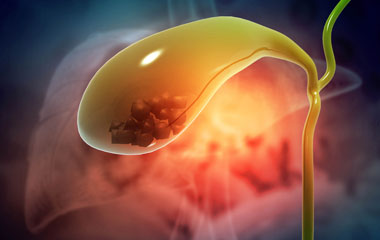Gall Bladder Stones
What is the gallbladder?
Your gallbladder is a small, pear-shaped organ that stores and releases bile. Bile is the fluid your liver produces that helps digest fats in the food you eat.
Where is the gallbladder located?
Your gallbladder is located in the upper right part of your abdomen (belly). It sits just under your liver.
What is the function of the gallbladder?
Your gallbladder is part of your digestive system. Its main function is to store bile. Bile helps your digestive system break down fats. Bile is a mixture of mainly cholesterol, bilirubin and bile salts.
How does the gallbladder help other organs?
Your gallbladder is connected to other parts of your digestive system through a series of bile ducts called the biliary tract. The biliary tract (sometimes called biliary system or biliary tree) is a pipe-like system that carries bile from your liver to your small intestine.
What does the gallbladder do?
Before you start eating, your gallbladder is full of bile. When you start eating, your gallbladder receives signals to contract and squeeze the stored bile through the biliary tract. The bile eventually finds its way to your largest bile duct, the common bile duct. Bile passes through the common bile duct into the duodenum, the first part of your small intestine, where it mixes with food waiting to be digested. After you eat, your gallbladder is empty and resembles a deflated balloon, waiting to be filled up again.
What are common complication of gallbladder stone?
Several conditions can cause problems in your gallbladder. The most common condition is gallstones. Gallstones are typically harmless but can sometimes lead to disease states. Gallbladder issues include:
- Gallstones: Gallstones are pebble-like objects made of bile material that develop in the gallbladder or bile ducts. They can be as tiny as grains of sand to as large as golf balls. They’re usually harmless but can cause pain, nausea or inflammation.
- Cholecystitis: Cholecystitis is inflammation of your gallbladder. It can occur when a gallstone blocks bile from exiting your gallbladder. Cholecystitis causes fever and pain and usually requires surgery.
- Obstructive Jaundice: When the gall stones slipped out of the gallbladder and obstruct the mean by duck that is called as common bile duct causing obstructive jaundice. Then will require an ERCP procedure to first remove the stones in CBD then proceed for gall bladder surgery.
- Gallstone pancreatitis: Gallstone pancreatitis is inflammation of your pancreas. It occurs when a gallstone travels down the common bile duct and blocks the pancreatic duct at a common point just before draining into the small intestine.
- Gallbladder cancer: Gallbladder cancer is rare. You might feel pain in the right upper quadrant of the abdomen. But, it is far more likely for this pain to occur due to another condition.
What are the signs or symptoms of gallbladder stone problems?
The symptoms of gallbladder problems vary. Some people don’t feel gallstones or even know they have them. But if gallstones block the flow of bile, they can affect your gallbladder or pancreas. You may experience the following symptoms:
- Upper right abdomen pain.
- Upper mid-abdomen pain.
- Upper right abdominal pain radiating to the right shoulder or back.
- Pain after eating a fatty meal.
- Jaundice (yellowing of your skin and whites of your eyes).
- Nausea and vomiting.
- Fever.
- Chills.
- Light-brown pee or light-colored poop.
How are gallbladder stone treated?
Most gallbladder issues are treated with the removal of your gallbladder. Surgery to remove your gallbladder is called a cholecystectomy. Your gallbladder is not an essential organ. This means you can live a normal life without a gallbladder. When a surgeon removes your gallbladder, bile will flow out of your bile ducts directly into your digestive system instead of being stored in your gallbladder first.
Surgeons can perform cholecystectomies three ways:
- Open cholecystectomy: With open surgery, your surgeon operates through one large incision. Your surgeon may perform an open cholecystectomy if your gallbladder is severely inflamed or scarred.
- Laparoscopic cholecystectomy: With laparoscopic surgery, your surgeon operates through a few small incisions. Laparoscopic surgery generally leads to a faster recovery, less pain and smaller scars. In most cases, cholecystectomies will be performed laparoscopically.
- Robotic cholecystectomy: This is a more recent method and is available in a small number of centers.
